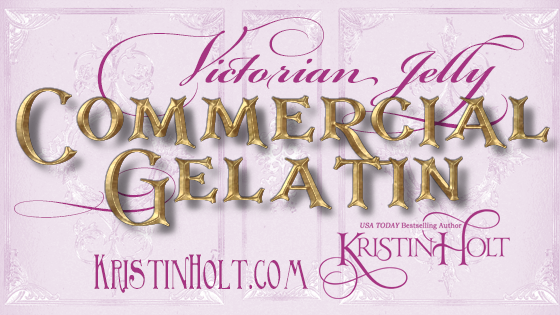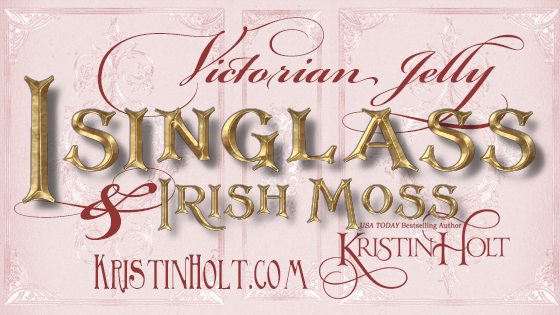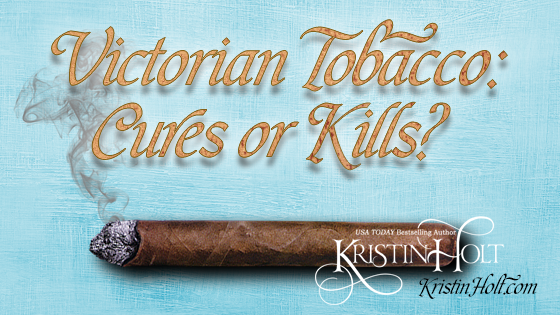
by Kristin Holt | Jul 23, 2022 | Articles
After the advent of Victorian commercially prepared gelatin came colored, flavored boxed gelatin. The Jell-O brand was born in 1899. The new brand’s four-flavor line-up was well-received by housekeepers (wives), and continually promoted by the food manufacturer. Newspaper recipes urged cooks to rely on Jell-O brand gelatin in dessert making.
Don’t miss any one of this 8-part blog series on Victorian America’s Jellies.

by Kristin Holt | May 28, 2022 | Articles
Credit goes to a Victorian-era inventor for out-of-a-box gelatin. What an amazing labor-saving invention! Until now, wives and daughters everywhere had been making gelatin out of pigs feet and a good deal of elbow grease.
How did nineteenth century scientists manage to capture the essence of gelatin and put it in a box? And how much did it cost?

by Kristin Holt | Apr 12, 2021 | Articles
Victorian Jellies were all the rage throughout nineteenth-century America and Victoria’s British Isles.
Through mid-century, cooks relied on various gelling agents to set up their moulded creations. Two of those articles from the sea–isinglass and Irish moss–are illustrated by means of Victorian-era recipe books and newspaper advertisements.

by Kristin Holt | Jul 1, 2020 | Articles
Did Victorian-era Americans partake of tobacco products with ignorant bliss? Or were they aware of health dangers? And were those health dangers remotely accurate (compared to today)?
Join me for a look at various newspaper articles, medical journal pieces, vintage photographs, and more. I’ll allow you to draw your own conclusions.

by Kristin Holt | Feb 12, 2020 | Articles
Part 3 of an ongoing series ~
Who knew? Tobacco use in the nineteenth century might surprise you! Without today’s health warnings, tobacco became a favorite vice among men and women of all ages (including children). Numerous vintage sources paint an accurate backdrop of cigarettes, cigars, cigarillos, chewing tobacco, etc., dispelling the myths surrounding tobacco use throughout the American nineteenth century.













